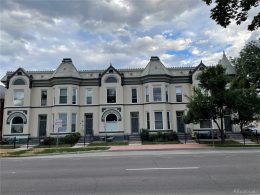Ventilation is one of the most important points of the Passive standard. And it is that once the Passive Houses are very well insulated and very hermetic, we need to solve their ventilation. But we must do it in a mechanical, controlled and efficient way.
Ventilation just by opening the windows of the house is not enough. Because it is a punctual ventilation, which occurs only during the opening moment. It is also a localized ventilation, only where that window opens. And of course it is an economically expensive ventilation due to the loss of thermal comfort that has to be compensated with air conditioning.
When ventilating we exchange the air inside the house for that outside, with the changes in temperature, humidity and possible additions to the air that this implies. That is why it is so important to design a way of mechanical ventilation that controls this process and minimizes its consumption.
In the end, what is sought is the combination of the hermeticity of the house (passive measures) with an efficient ventilation system (active measures). This balance in Passive ventilation is what ensures comfort and energy savings in our Passive home.
Characteristics of passive house ventilation
In mechanical ventilation systems, a (minimum) contribution of energy is needed to carry out the exchange of air between the interior and exterior of the house. But in exchange, this air circulation is done in a controlled way, ensuring the cleanliness of the air, as opposed to strictly passive ventilation. As could be the natural currents of air through the open windows.
The mechanical ventilation system is based on a set of ducts throughout the house. At the same time, they extract the stale air from the humid areas and drive clean air to the dry areas of the house.
It carries with it a series of filters that control the quality of the air that enters the house. Thus cleaning possible particles or harmful elements that we are not interested in entering the house.
In homes with Passive certification, that is, homes that are really Passive homes and that meet their standard with a guarantee, they always carry a heat recovery unit. Which is nothing but the most efficient mechanical ventilation system. And this is achieved thanks to the fact that the stale air already conditioned before leaving the house helps to temper the new air. And so you get better performance and lower energy consumption.
Advantages of mechanical passive house ventilation
Compared to merely passive ventilation, the main advantage of mechanical ventilation systems is the control of the quantity and quality of the air in the Passive dwelling.
The system makes it possible to extract the air from humid rooms (kitchens and bathrooms) in a calculated way and renew it. At the same time it drives clean air into dry rooms (living room and bedrooms). In this way, the hourly renovations of the house are carried out in a controlled and intentional way depending on the demand. It is not the same that only the people who live in it are in the house or that more guests come. Because they will generate more CO2 and a higher rate of air renewal will be necessary.
And this is especially important when the house, being passive, presents a greater tightness. In other words, unwanted air infiltrations have been minimized in design and construction. Whether in opaque enclosures or especially in Passive windows or Passive doors. So that the renewal of air in the home is always controlled and does not escape due to poor or insufficient quality in the construction of the home. And it is that the Passive standard is always associated with a higher quality in construction.
In addition, the filters incorporated in the Passive mechanical ventilation systems ensure that the air enters our passive house completely clean of particles or harmful agents. This ensures the quality of the air and contributes enormously to the interior comfort of the home.
Mechanical ventilation systems for passive houses
In any home, but especially in isolated and hermetic homes such as passive houses, ventilation is essential. Above all to ensure the quality of indoor air, renewing stale air and eliminating bad odours.
And speaking of Passive ventilation, mechanical ventilation is the most efficient system to ventilate. But within this there are several alternatives.
1. Single flow mechanical ventilation systems
In these cases, mechanical ventilation is performed automatically. And it is independent of the climatic conditions inside the house and outside.
2. Simple hydroregulable flow mechanical ventilation systems
Here instead a function is incorporated on the case of single flow mechanical ventilation for humidity. In this way the rooms are ventilated depending on the humidity. This reduces the amount of air extraction and therefore improves consumption.
3. Double flow mechanical ventilation systems
The best possible case in mechanical ventilation since part of the energy that is extracted is recovered. Thus improving the performance, efficiency and consumption of the home during ventilation. This is the case of the well-known heat recuperator, always present in Passive homes.









